Last Updated on November 1, 2023 by Katie
Do you want a passive income business that’s easy to start? If so, you’re in the right place as this guide is going to teach you how to sell low-content books on Amazon.
According to statistics, Amazon has a daily sales revenue of $1.4 billion and has over 310 million customers worldwide!
So, as you can see, selling on Amazon can be a very profitable venture!
Whether you’re a budding artist, a wordsmith, or simply looking for a side hustle, selling low-content books is a top passive income stream and the opportunity to showcase your artistic talents to a wide audience.
Let’s dive in!
Related reading: The Complete Beginner Guide to Writing eBooks for Passive Income
Overview of This Guide on How to Sell Low Content Books on Amazon
- What are low-content books?
- What is Amazon KDP?
- How to sell low-content books on Amazon
- The book creation process
- How to create your book listing
- Tips for optimizing book sales
- Benefits of selling low-content books
- Income potential for low-content books
- Best tools for creating low-content books
- 5 other platforms to sell your books
Want to Make Extra Money Right Now?
Acorns: Get a free $10 just for signing up and start saving for your future. Your spare change is invested for you by experts. No investment knowledge is required! Join Acorns Now.
Survey Junkie: Earn easy money by taking surveys and giving your opinion on new products. Make up to $3 per survey and cash out quickly. Join Survey Junkie Now.
American Consumer Opinion: Get paid for your opinion taking surveys and taking part in research studies. Earn between $1 and $50 per survey. Join ACOP Now.
What are Low Content Books?

Low-content books are books that contain minimal or no content on their interior pages.
They are specifically designed to be filled in or completed by the reader. Unlike traditional books that feature lengthy text or narrative, low-content books offer a more interactive and hands-on experience.
These books typically include repetitive layouts or templates, such as:
- Planners
- Diaries
- Activity books
- Coloring books
- Log books
- Prompt journals
- Lined or plain notebooks
While low-content books can vary, the main characteristic is that they provide space for users to add their own content, ideas, or creativity.
What is Amazon KDP?

Amazon KDP, which stands for Kindle Direct Publishing, is a platform that enables self-publishers to create and sell both digital and physical books.
Whether you want to create low-content books like guided journals and planners or no-content books like composition notebooks, KDP is the go-to place for self-publishing your own print books.
You may have known Amazon’s self-publishing service as CreateSpace in the past, but it has now been integrated into KDP.
This platform offers a convenient alternative to traditional publishing methods, saving you time and simplifying the publishing process.
With KDP, you can have your book listed for sale quickly, without having to deal with inventory or storage.
One of the key benefits of using Amazon KDP is its Print On Demand service.
This means that your books will only be printed when a customer places an order. You won’t need to hold any inventory, allowing for a more cost-effective and efficient publishing experience.
Simply upload your book information, including the cover image, interior contents, title, and keywords, and Amazon takes care of the rest.
How to Sell Low Content Books on Amazon: The Creation Process
Follow these steps to create your low-content books to sell on Amazon.
Simple Low Content Book Ideas that Sell Well
Brainstorming ideas for low-content books doesn’t have to be a complex task. In fact, simplicity can be your ally in this process.
Here are a few ideas for easy-to-make, low-content book ideas that sell:
- Kids coloring books
- Adult coloring books
- Activity books
- Guided journals
- Themed planners
- Guided memory books
- Meal planners
- Puzzle books
- Travel diaries
- Gratitude journal
- Recipe notebooks
Choose Your Low Content Book Niche
To increase your chances of success, it’s crucial to select a well-defined niche for your low-content books.
A niche allows you to target a specific audience and stand out from the competition. Do some research to identify popular niches or gaps in the market that align with your interests and expertise.
This will give your books a better chance of attracting the right buyers.
A few profitable niche ideas for, include:
- Motivational
- Self care
- Humor
- Money orientated
- Holidays
- Mom and baby
- Kids
- Stay-at-home activities
Research and Gather Keywords

Keywords play a vital role in helping potential buyers discover your low-content books.
Conduct keyword research using tools like Amazon’s keyword tool or third-party tools to identify relevant and high-volume keywords related to your chosen niche.
Incorporate these keywords strategically throughout your book’s title, description, and backend keywords.
This will improve your book’s visibility in search results and increase the chances of attracting organic traffic.
Take a look at these FREE Amazon keyword tools to get started with:
Designing the Cover
The cover of your low-content book is the first thing potential buyers will see, so it needs to be visually appealing and representative of the content inside.
Consider hiring a professional designer or using online tools to create an eye-catching cover that aligns with the theme and purpose of your book.
Utilize bold colors, attractive fonts, and compelling graphics to grab the attention of potential buyers browsing through Amazon’s vast catalog.
Creating the Inner Pages
The content within your low-content book should be engaging and aligned with the purpose of the book.
Depending on the type of book you’re creating, you may include prompts, templates, or spaces for users to write or track their progress.
Ensure that the design of the inner pages is consistent, aesthetically pleasing, and user-friendly.
Use clear headings, organized layouts, and intuitive navigation to enhance the overall user experience.
Check out the following places buy ready-made inner pages for your books:
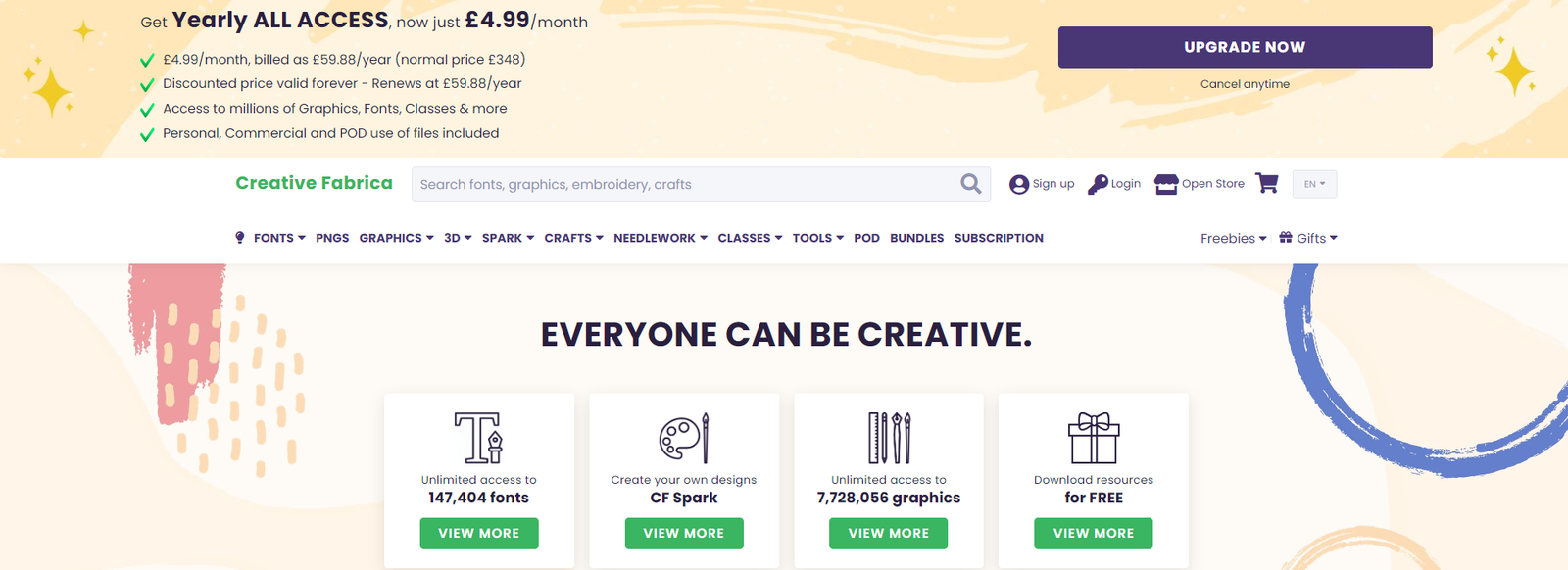
Crafting an Engaging Book Title
Your book title is more than just a name; it’s an opportunity to capture the attention of potential buyers and convey the value your book offers.
Craft a title that is concise, descriptive, and compelling. Highlight the main benefit or unique selling proposition of your low-content book.
Incorporate relevant keywords naturally into the title to improve its visibility in search results. A well-crafted book title can significantly impact the success of your sales.
How to Create Your Low Content Book Listing on Amazon
Follow these steps to create your first, optimized low content book listing on Amazon.
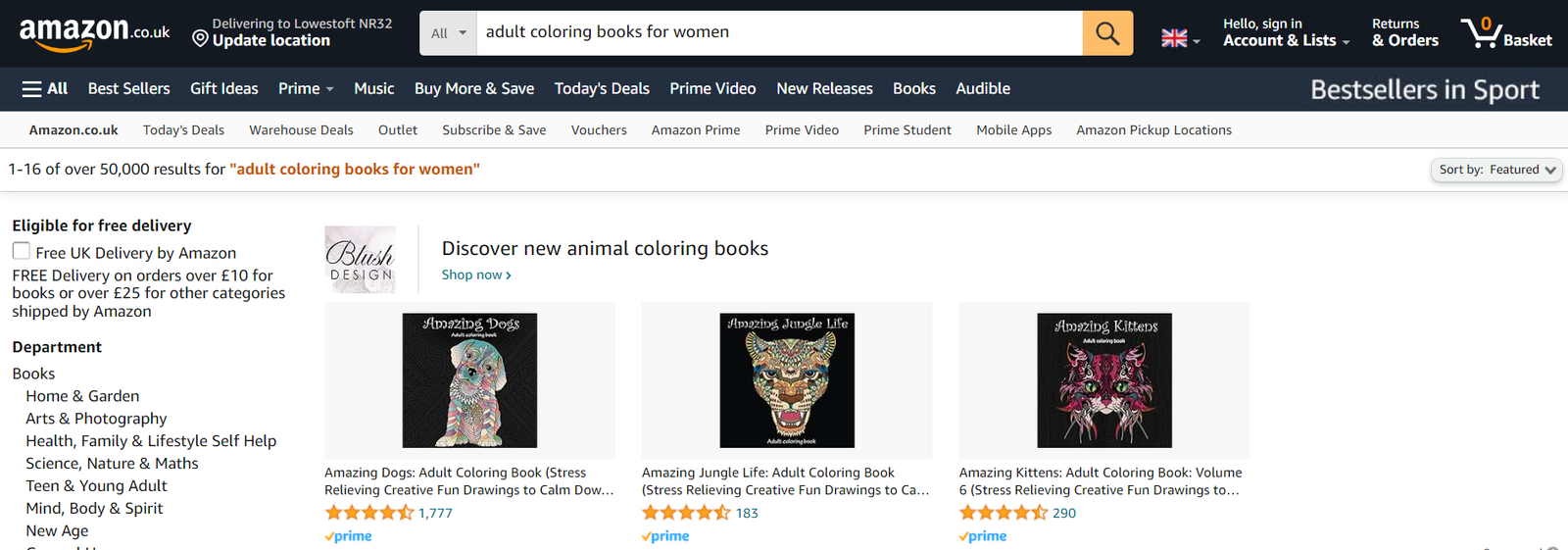
Filling Out Book Information
When creating your listing, it’s essential to provide accurate and relevant details.
This information helps potential readers understand what your book offers and improves its visibility in search results.
Here’s how you can fill out the book information:
- Start by accessing your Bookshelf on Amazon’s Kindle Direct Publishing (KDP) platform
- Click on the “+ Create” button and select either “Create Paperback” or “Create Hardcover” depending on your book format

- Enter the necessary details in each section, including the title, description, keywords, and categories
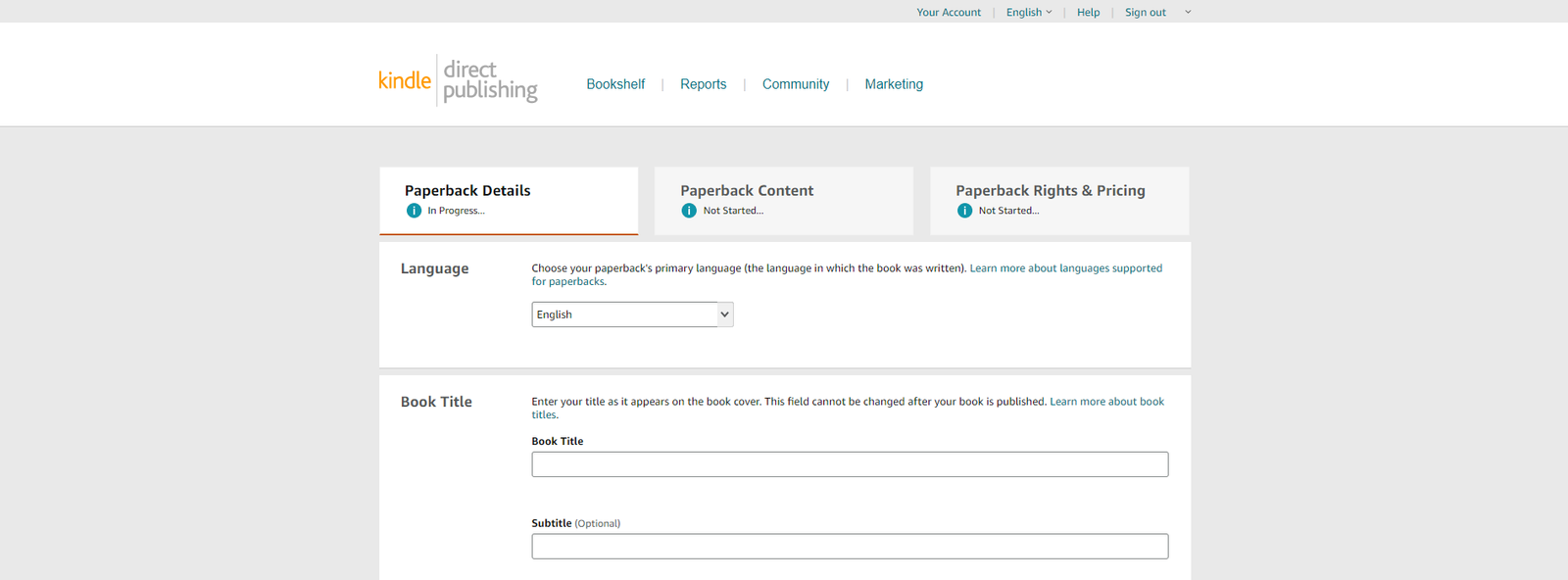
- Under the “Categories” section, make sure to check the “Low-content” box to accurately categorize your book

- Double-check your entries to ensure accuracy and completeness
- Once you have entered all the information, proceed to the next step
Uploading the Book Cover and Interior
The book cover and interior are crucial elements of your low-content book listing as they visually represent what your book offers.
Follow these steps to upload your book cover and interior:
- In the “Paperback or Hardcover content” section of the listing, you will find the option to choose between publishing with or without an ISBN
- Select the appropriate option based on your preference
- Upload your book cover file, making sure it meets Amazon’s guidelines for dimensions and file type
- Ensure that your book cover accurately reflects the content and theme of your low-content book
- Next, upload the interior file, which typically includes the repetitive elements for users to fill in
- Preview your book to ensure that the formatting and layout are correct
- Consider ordering a proof copy to review the physical version of your book before publishing
Choosing the Right Keywords for Your Book
Choose the right keywords to improve your book’s visibility in search results.
- Conduct thorough keyword research to identify relevant and popular terms related to your low-content book’s topic or theme
- Consider using online tools and Amazon’s search bar suggestions to gather keyword ideas
- Choose keywords that accurately describe the content and purpose of your book
- Include both broad and specific keywords to attract a wider range of potential buyers
- Incorporate keywords in relevant sections like the title, subtitle, book description, and backend keywords
- Monitor the performance of your chosen keywords and make adjustments as needed to optimize visibility
How to Sell Low Content Books on Amazon: Optimizing Sales
By optimizing your sales approach, you can generate consistent sales, reach new buyers, and make your books visible to the world.
Follow these steps to get the most sales quickly:
Pricing Strategies for Low-Content Books

When it comes to pricing your low-content books, it’s important to find the sweet spot that balances profitability and competitiveness.
Consider the following strategies:
- Competitive Pricing: Research the market to understand the pricing range for similar low-content books. Price your books competitively to attract buyers and stay ahead of the competition.
- Tiered Pricing: Offer different pricing tiers based on the complexity or uniqueness of your designs. This allows you to capture a wider range of customers with varying budgets.
- Limited-Time Promotions: Create a sense of urgency and drive sales by running limited-time promotions, such as discounted prices or bundle deals. Promote these offers through various marketing channels to maximize visibility.
Promoting Your Low-Content Books

Promotion plays a crucial role in making your low-content books stand out among the vast selection on Amazon.
Consider the following strategies to effectively promote your books:
- Social Media Marketing: Leverage platforms like Pinterest and Instagram to showcase visually appealing images of your low-content books. Create engaging posts, share customer testimonials, and use relevant hashtags to expand your reach and attract potential buyers.
- Email Marketing: Build an email list of interested customers and regularly send them updates, special offers, and new product releases. Use compelling copy and visually appealing graphics to capture their attention and entice them to make a purchase.
- Search Engine Marketing: Consider creating a blog or website where you can provide valuable content related to your low-content book niche. Optimize your content for relevant keywords and link back to your Amazon product listings, driving organic traffic and increasing your book’s visibility.
Handling Customer Service and Returns
Providing excellent customer service is crucial for maintaining a positive reputation and encouraging repeat purchases.
Here are some tips for handling customer service and returns effectively:
- Prompt Communication: Respond to customer inquiries and messages quickly and professionally. Address any concerns or issues they may have in a timely manner, ensuring a positive customer experience.
- Clear Return Policy: Clearly outline your return policy on your Amazon product listings and website. Make it easy for customers to understand the steps they need to take if they want to return or exchange a product.
- Resolving Issues: In the event of a product defect or customer dissatisfaction, aim to resolve the issue promptly and amicably. Offer solutions such as replacements, refunds, or alternative products to ensure customer satisfaction.
Benefits of Selling Low-Content Books

Selling low-content books on Amazon comes with several advantages:
- High Demand: Low-content books cater to a wide range of interests and hobbies, making them appealing to a large customer base. From artists and writers to individuals seeking relaxation or personal organization, there is a significant demand for these types of books.
- Easy to Create: Unlike writing a full-length novel or textbook, creating a low content book requires less time, effort, and expertise. With pre-designed templates and layouts available, you can quickly produce appealing content that appeals to your target audience.
- Cost-effective: Low-content books can be produced at a lower cost compared to traditional books. The absence of extensive textual content means less printing and production expenses, making them a cost-effective option for self-publishers.
- Customization Opportunities: One of the major advantages of low content books is their customization potential. You can create books tailored to specific themes, niches, or demographics, allowing you to target a specific market and stand out from competitors.
- Recurring Sales: Once customers experience the value and enjoyment of your low content books, they are likely to purchase additional titles or recommend them to others. This can lead to recurring sales and a loyal customer base.
Potential Income from Low-Content Books
The income potential from selling low-content books on Amazon can be significant.
While the exact earnings will depend on various factors such as book quality, marketing efforts, and market demand, many self-publishers have found success in this niche.
The pricing of low-content books can range from a few dollars to higher price points, depending on the uniqueness, quality, and perceived value of the content.
According to research, the average 120 page low content book with black and white interiors will earn the author $1.90 per sale.
Based on that, if you have 20 books selling one copy per day, you can make $1,140 a month.
Best Tools for Creating Low-Content Books
There are several tools available that can assist with various aspects of book creation.
Some are free to use or you can pay a small subscription to access better features and make the creation process a little easier.
Here are a few of the low-content book creation tools I’ve used and recommend.
1. Canva
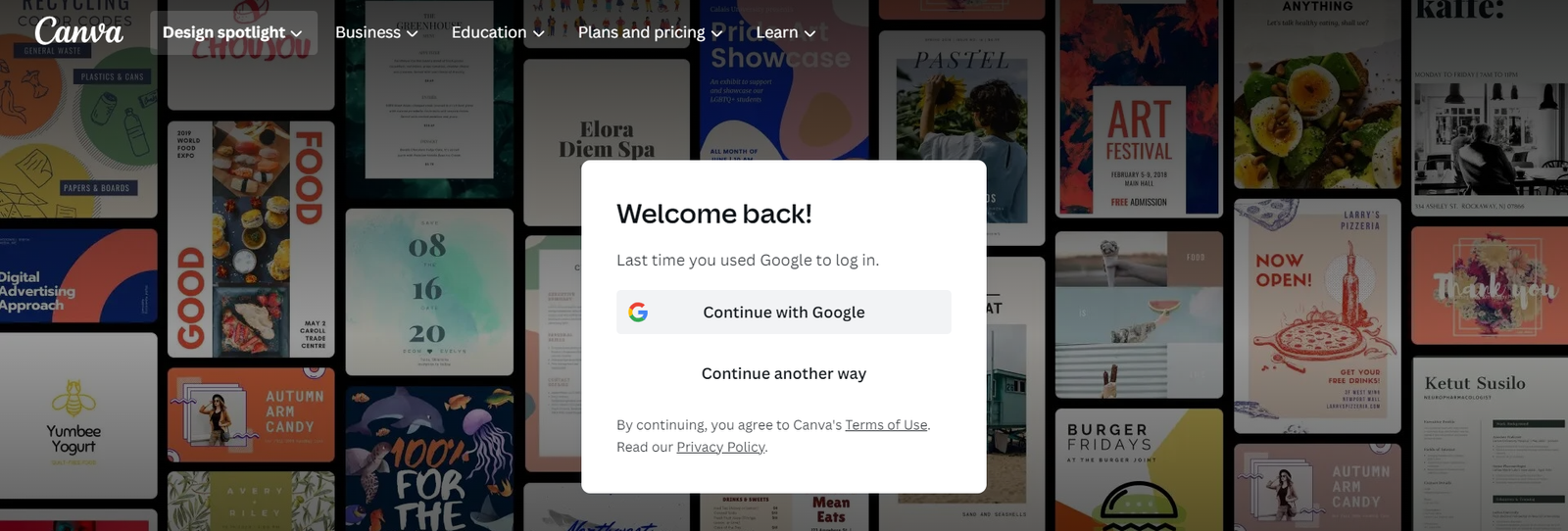
Canva is a versatile graphic design platform that offers a wide range of templates and design elements.
It allows you to easily create visually appealing covers and interior pages for your low-content books.
With its user-friendly interface and drag-and-drop functionality, even those without design experience can quickly create professional-looking books.
2. Microsoft Word
Microsoft Word is a familiar and widely used word-processing software that can be a valuable tool for creating low-content books.
It provides robust formatting options, such as page layout customization, font styles, and image placement.
You can utilize its templates and features to design and format your book according to your preferences.
3. KDP Paperback Templates
Amazon Kindle Direct Publishing (KDP) offers pre-designed paperback templates that simplify the book creation process.
These templates provide standardized layouts for different types of low-content books, such as journals, planners, and coloring books.
By using KDP paperback templates, you can save time and ensure that your books meet Amazon’s printing guidelines.
4. Adobe InDesign

For those seeking more advanced design capabilities, Adobe InDesign is a powerful desktop publishing software.
It offers a wide array of design tools and features that allow for precise control over the layout and design of your low-content books.
With InDesign, you can create unique and customized book designs, making your books stand out in the marketplace.
5. Book Bolt
Book Bolt is an all-in-one platform specifically tailored for creating low-content books.
It provides a comprehensive suite of tools and resources, including keyword research, niche analysis, and book listing optimization.
Book Bolt can help you identify profitable niches, generate book ideas, and optimize your listings for maximum visibility and sales.
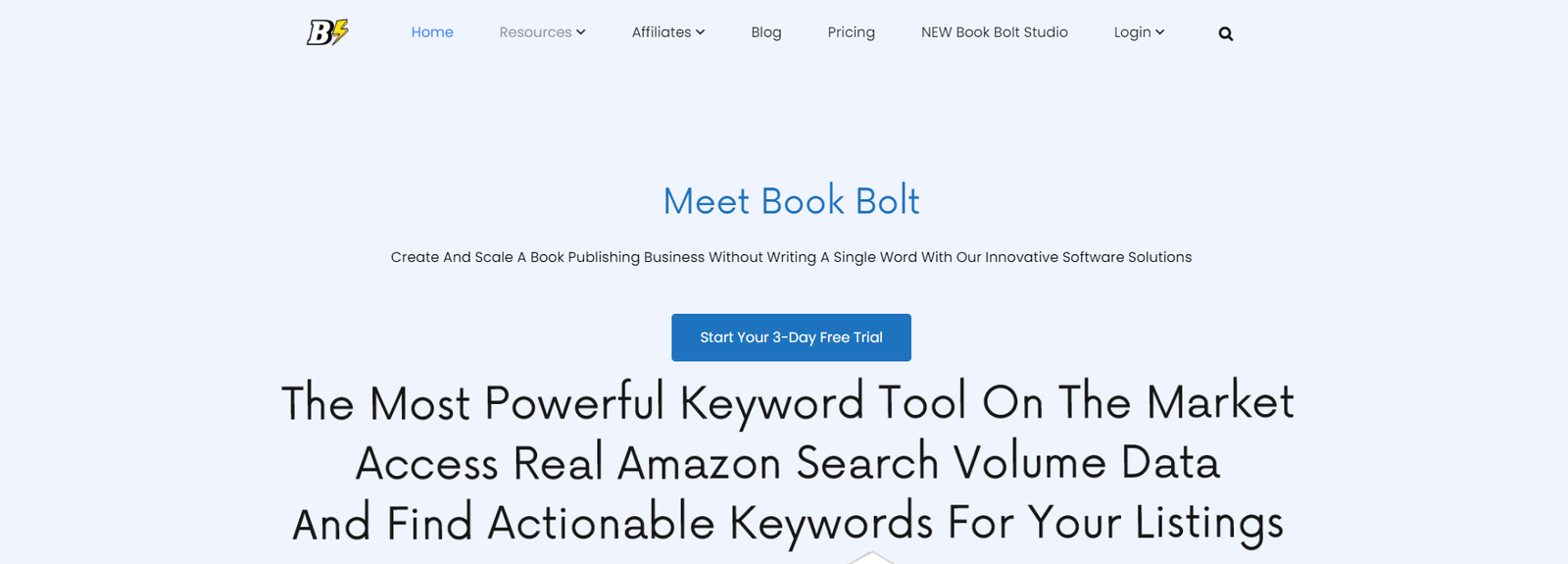
6. Etsy Research Tools
Etsy is a popular marketplace for handmade and unique products, including low-content books.
Utilizing Etsy research tools, such as Marmalead and eRank, can provide valuable insights into trending book themes and keywords.
By analyzing best-selling books on Etsy, you can gain inspiration and ensure that your low-content books align with current market demands.
7. Amazon Best Sellers Rank Calculator
Using an Amazon Best Sellers Rank Calculator is a helpful tool for estimating the sales performance of a particular low-content book category.
By inputting relevant data, such as the book’s price and estimated monthly sales, this tool provides an estimate of the book’s Best Sellers Rank.
This information can guide you in selecting profitable niches and optimizing your pricing strategy.
5 Other Platforms to Sell Your Low Content Books
Now you know how to sell low-content books on Amazon, you can increase your earning potential by selling them on other platforms.
Here are five other platforms where you can sell your low content books:
Etsy

Etsy is a popular marketplace known for its handmade and unique products.
It’s a great platform for selling low-content books because it attracts a niche audience that appreciates handmade and personalized items.
By setting up a shop on Etsy, you can showcase your creativity and target customers who value customized journals, planners, and other low-content books.
Related reading:
- Best Things to Sell On Etsy to Make Money
- How to Start an Etsy Shop with No Money?
- How to Sell T-Shirts on Etsy Using Printify
- How to Become a Successful Etsy Seller
- How to Promote Your Etsy Shop on Social Media
Barnes and Noble Press
Barnes and Noble Press is the self-publishing platform associated with Barnes & Noble, one of the largest book retailers in the United States.
You can publish your low-content books through Barnes and Noble Press, and tap into their extensive customer base and gain exposure to a wider audience.
It’s a platform that offers good visibility and credibility for your books.
Lulu Press
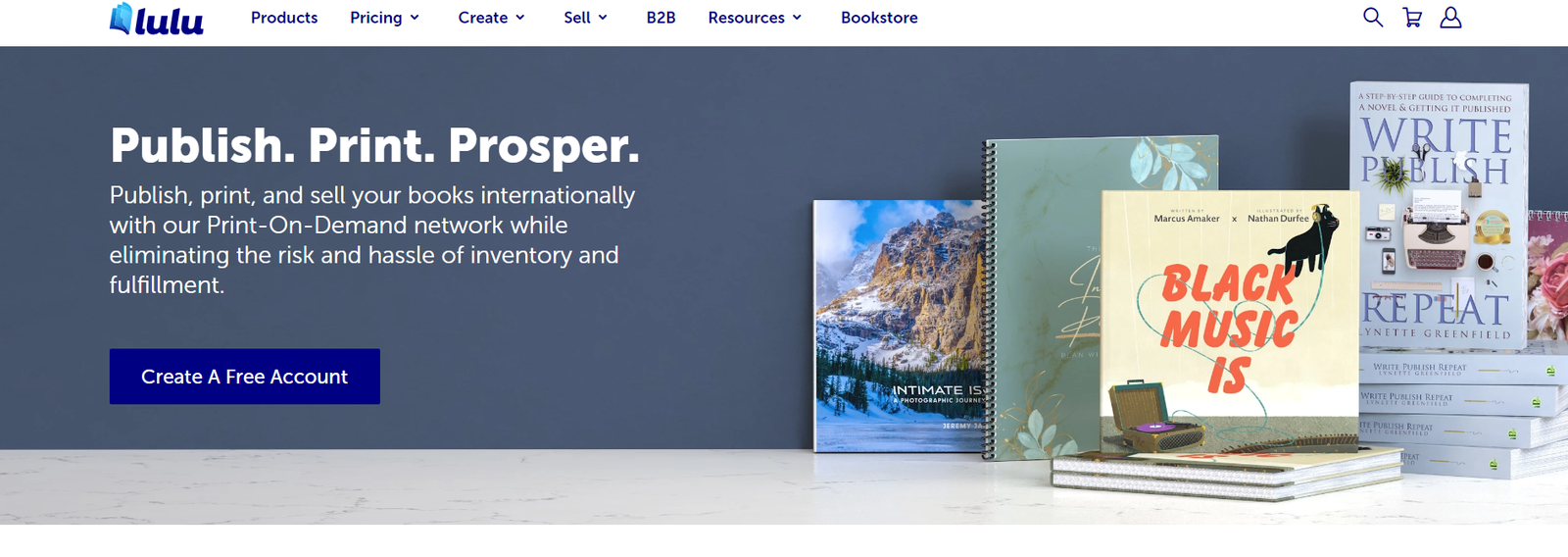
Lulu Press is another popular self-publishing platform that allows authors to create and sell their own books.
It offers a simple and user-friendly interface, making it easy for anyone to upload and publish their low-content books.
Lulu Press also provides distribution options, allowing you to reach online retailers as well as brick-and-mortar bookstores.
Blurb
Blurb is a platform that specializes in creating and selling high-quality, visually appealing books.
It caters to photographers, designers, and authors who want to showcase their work in a professional manner.
If your low-content books focus on beautiful designs and artwork, Blurb can be a great platform to reach an audience that appreciates aesthetic appeal.
RedBubble

RedBubble is an online marketplace that enables artists and designers to sell their artwork on various products, including notebooks, stickers, and clothing.
If your low-content books feature unique illustrations or designs, RedBubble can be a great platform to showcase and sell your work.
It provides a community of artists and a built-in customer base that appreciates creative and artistic products.
Final Thoughts on How to Sell Low-Content Books on Amazon
Now you know how to sell low content books on Amazon, it’s over to you to get started creating, uploading and marketing your designs.
Selling on Amazon can be a lucrative and low-effort way to generate passive income. With Amazon’s print-on-demand service, Kindle Direct Publishing (KDP), you can easily create and sell your own notebooks, journals, and planners without the need for extensive writing skills.
By leveraging the power of Amazon’s vast customer base, you can maximize your book’s exposure and increase your chances of making sales.
With KDP taking care of the printing, shipping, and customer service, you can focus on creating more books and growing your passive income wealth!
Want more ideas for selling online?
Learn how to make money selling stickers on Etsy and digital planners on Etsy.
The post How to Sell Low Content Books on Amazon: Complete Guide to Your First Sales appeared first on Remote Work Rebels.
* This article was originally published here

No comments:
Post a Comment